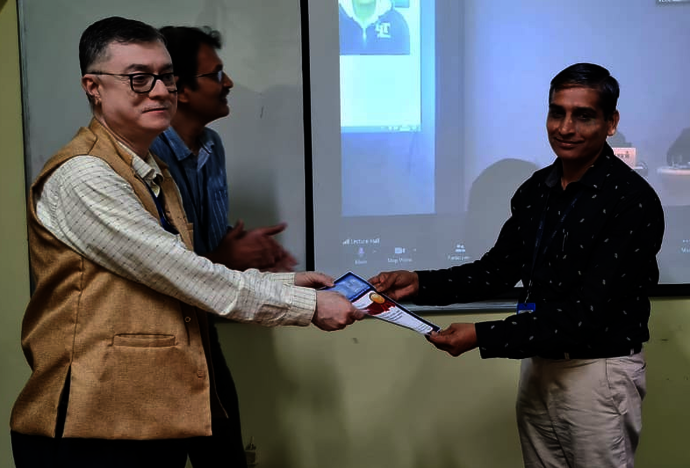
GSI and FAIR mourn the loss of
Prof. Dr. Dr. h.c. Hans Geissel
* 13.5.1950 † 29.4.2024
who passed away at the age of 73.
Hans Geissel was an enthusiastic scientist and gifted experimental physicist, a continuous source of new research ideas, involved in many groundbreaking discoveries in the field of exotic nuclei and other areas of research,awarded numerous scientific prizes and honors, professor at the Justus-Liebig-University Giessen and honorary doctor of Chalmers University in…

A new comprehensive simulation study led by GSI/FAIR scientists demonstrates the potential of pulsed electron lenses to significantly increase the highest achievable intensities of heavy-ion beam ring accelerators. This novel space-charge compensation technique is pioneered at GSI/FAIR, where also a prototype is under development. The study, published in Physical Review Letters, paves the way to overcome the so-called space charge limit in ion synchrotrons.

The progress of the FAIR project and the ongoing research activities were the focus of a visit to the GSI/FAIR facilities by Judith Pirscher, State Secretary at the Federal Ministry of Education and Research (BMBF). The State Secretary was welcomed by Professor Paolo Giubellino, Scientific Managing Director of GSI and FAIR, and Jörg Blaurock, Technical Managing Director. During her visit, she gained extensive insight into GSI/FAIR’s scientific and technical prospects for the coming decades.

The nationwide day of action Girls'Day in 2024 was once again very well received at GSI/FAIR. This time, 68 girls between the ages of eleven and 17 took part in the event and learned about the accelerator facilities and experiments, about research and infrastructure, and especially about the career opportunities at GSI and FAIR. The girls took advantage of Girls'Day to gain insight into the wide range of activities at an international research institution, especially in professions in which…

It could be a new, promising combination of two therapeutic approaches and a key to better combating advanced-stage cancer. Two strong partners have joined forces to explore this possibility: The biopharmaceutical and translational research institute TRON in Mainz with its highly specialized oncology research and the GSI Helmholtzzentrum für Schwerionenforschung in Darmstadt with its worldwide unique accelerator facilities and the cancer therapy with ion beams developed here. Researchers from…

What will the physics of the future look like? What are the phenomena that need to be explored? How can this research succeed? In the scientific publication “The sounds of science – a symphony for many instruments and voices – Part II”, the journal Physica Scripta gets to the bottom of these questions. Dr. Suzy Lidström, former editor of the Royal Swedish Academy’s physics journal, asked a total of 24 experts to share their vision of the future. In addition to three Nobel Prize winners – Gerard…

Thomas Stöhlker, head of the research division for Atomic, Quantum and Fundamental Physics at GSI/FAIR, Director of the Helmholtz Institute Jena and Professor at the Friedrich Schiller University Jena, receives an ERC Advanced Grant from the European Research Council (ERC). His project HITHOR has been awarded the European Union's research funding prize for established scientists. The prestigious award enables intensive research with highly-charged 229-thorium ions to pave the way for the…

The consortium of Dr. Maarten Boonekamp (spokesperson, Institute of Research into the Fundamental Laws of the Universe, CEA, Paris-Saclay), Prof. Dr. Jens Erler (Institute for Nuclear Physics, JGU Mainz), and Prof. Dr. Frank Maas (Institute for Nuclear Physics, JGU Mainz, GSI/FAIR and Helmholtz Institute Mainz) has been awarded in April 2024 an ERC Advanced Grant for the project “Zeptometry”. This project aims to combine new precision measurements at the highest LHC-energies at the European…

The CBM Collaboration awarded two young researchers with the "CBM Best Thesis Award" for outstanding PhD theses. The awards were presented during the CBM Collaboration Meeting and honored Dr Vikas Singhal and Dr Marcel Bajdel. The Compressed Baryonic Matter (CBM) experiment is one of the central research pillars of the international accelerator center FAIR, which is currently being built at GSI.











